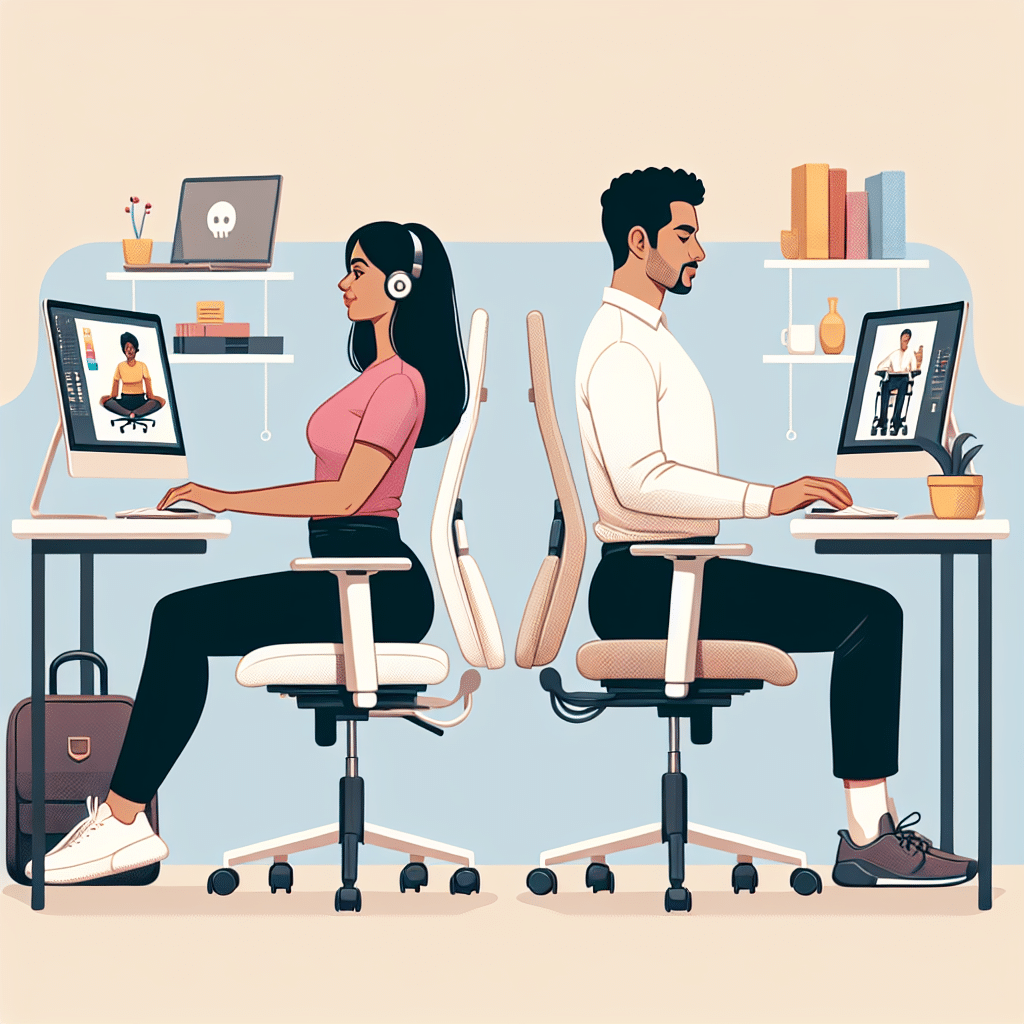Understanding Ergonomics
Understanding the fundamentals of ergonomics in a home office setting is essential for remote workers aiming to maximize comfort and productivity. Ergonomics involves designing workplaces to minimize strain and optimize safety and efficiency. Proper ergonomic setups can prevent chronic pain, improve posture, and increase overall work performance.
Selecting the Right Desk and Chair
Importance of Height Adjustments
When selecting a desk, height adjustability is crucial. A desk that’s too high or too low can lead to poor posture and discomfort. Ideally, when seated, your elbows should form a 90-degree angle, allowing your wrists to be straight while typing.
Choosing an Ergonomic Chair
Investing in an ergonomic chair is vital. Look for features such as lumbar support, adjustable seat height, and armrests. A chair that supports the natural curve of your spine will reduce pressure on your back. Ideally, the seat should allow your feet to rest flat on the floor or on a footrest, with knees forming a 90-degree angle.
Desk Organization and Setup
Monitor Positioning
The monitor should be placed at eye level or slightly below it, approximately an arm’s length away. This position helps avoid neck strain caused by looking up or down at the screen. If using multiple monitors, ensure they are at equal height and distance to minimize head movement.
Keyboard and Mouse Placement
Your keyboard should be positioned so that your wrists are straight, and your hands float comfortably above the keys. The mouse should be on the same level as the keyboard and within easy reach to avoid repetitive strain injuries. Using an ergonomic mouse can also help to reduce wrist pain.
Maintaining Proper Posture
Sitting Position
Keep your back straight and shoulders relaxed but not slumped. Sit all the way back in the chair so that the lumbar support fits snugly against your lower back. Your feet should be flat on the ground or on a footrest, with your knees at hip height or slightly below.
Arm and Hand Positioning
When typing, your arms should remain close to your body, with the elbows hanging at your sides. Keep your wrists in a neutral position, avoiding bending up or down while typing. Using a wrist rest can provide additional comfort.
Take Regular Breaks
Importance of Movement
Long periods of sitting can lead to stiffness and discomfort. Implement the 20-20-20 rule: every 20 minutes, take a 20-second break to look at something 20 feet away. This practice helps reduce eye strain.
Stretching Exercises
Incorporate brief stretching sessions into your routine. Stand up, stretch your arms overhead, and twist your torso side to side. Simple neck stretches can relieve tension accumulated from desk work.
Optimizing Lighting
Natural Light
Position your desk near a window to take advantage of natural light, which can boost your mood and energy levels. However, avoid direct sunlight on your screen to prevent glare.
Artificial Lighting
Ensure adequate artificial lighting, especially if natural light is lacking. Use a desk lamp with adjustable brightness, aiming for soft, diffused illumination that reduces glare on screens and minimizes eye strain.
Adjusting Your Technology
Software Tools
Utilize software tools like blue light filters to reduce eye strain during extended screen time. Programs that remind you to take breaks can also be integrated easily.
Cable Management
Keeping cables tidy reduces clutter and potential distractions. Use cable organizers to avoid tangling, which aids in maintaining a focused work environment.
Managing Your Work Environment
Noise Control
Consider using noise-canceling headphones or ambient noise machines to minimize distractions in your home office. Background music that enhances focus can also be beneficial.
Keeping it Clutter-Free
A tidy workspace promotes clarity and minimizes stress. Implement organizational tools such as trays, file holders, or online task management systems to keep your desk organized.
Nutrition and Hydration
Staying Hydrated
Placing a water bottle at your workstation serves as a reminder to stay hydrated throughout the day. Adequate hydration is essential for maintaining focus and overall health.
Smart Snacking
Stock healthy snacks to avoid the temptation of unhealthy options. Foods like nuts, fruits, and yogurt can keep your energy levels stable without the sugar crashes often caused by junk food.
Mental Health Practices
Mindfulness Techniques
Incorporate mindfulness practices. Brief meditation sessions, deep-breathing exercises, or even a few moments of focused reflection can enhance your mental clarity and relieve stress.
Work-life Balance
Establish boundaries to separate work from personal life. Set specific working hours and adhere to them to promote a healthy work-life balance and reduce burnout.
Conclusion
Each of these elements plays a significant role in creating a comfortable and effective workspace for remote workers. Focus on ergonomics, desk setup, correct posture, regular breaks, lighting, technology management, and maintaining a balanced lifestyle to enhance your remote working experience.
